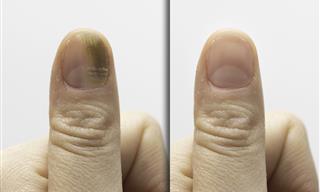Have you ever heard of chelation therapy? Used in alternative medicine, it aims to remove heavy metals and other substances from the body. Originally, chelation was used to treat conditions like lead poisoning, but now chelation therapy protects against heart disease and other major health problems.
So, how does it work? In chelation therapy, a chemical substance is introduced into the body through the intravenous (IV) drip. Once it enters the bloodstream, the chemical substance binds to certain molecules (such as metals or minerals) removing those molecules from the body. This is believed to enhance health and fight disease. The most common form of chelation therapy uses a synthetic amino acid called ethylene diamine tetra-acetic acid (EDTA), which is known to remove substances such as lead, iron, copper, and calcium from the blood.
Chelating agents are available solely by prescription and are approved for use only in specific circumstances, such as in the case of lead poisoning or iron overload.
The Uses for Chelation Therapy
Chelation therapy is said to aid the treatment of atherosclerosis (the hardening of arties). Because calcium deposits are found in artery-clogging plaques, some believe that using chelation therapy to remove calcium deposits can restore healthy blood flow in the arteries. Some proponents also suggest that the EDTA can act as an antioxidant, protecting against the damaging effects of chronic inflammation. Consequently, chelation therapy helps to treat osteoarthritis and other conditions related to inflammation. In fact, chelation therapy is able to treat the following health issues:
• Alzheimer's disease
• Angina
• High blood pressure
• High cholesterol
• Multiple sclerosis
• Peripheral artery disease
• Rheumatoid arthritis
This alternative form of therapy is also claimed to improve memory, treat diabetes-related complications and promote recovery from stroke.
Though known to be effective in the treatment of heavy-metal poisoning, the scientific evidence which supports the claim that chelation therapy can be effective against other health conditions is not vast. In a report in the Cochrane Database of Systematic Reviews in 2002, researchers analyzed five previously published studies testing the effects of EDTA-based chelation therapy in patients with atherosclerosis-related cardiovascular disease. However, results found insufficient evidence for chelation therapy's effectiveness in improving clinical outcomes for such patients.
Furthermore, according to a research review published in the BMC Cardiovascular Disorders in 2005, scientists looked at seven previously published studies that focused on the use of EDTA-based chelation therapy in the treatment of cardiovascular disease. It was found that the use of chelation therapy in the treatment of cardiovascular disease isn't supported by the best available scientific evidence. Therefore using this therapy as a substitute for standard care may cause indirect harm to the patient.
Adding to this, a report published in the American Heart Journal in 2000 concluded that chelation therapy should be considered obsolete as a treatment for heart disease, due to the possibility of causing severe adverse effects.
Nevertheless, there is some evidence that chelation therapy may be beneficial to people who have suffered a heart attack.
In National Institutes of Health-funded study published in Current Opinion in Cardiology in 2014, for instance, researchers evaluated the effectiveness and safety of EDTA-based chelation therapy in 1,078 people who had experienced a heart attack. Results showed that there was a significant reduction in risk of issues such as stroke and hospitalization for angina. The therapy appeared to be beneficial in people with diabetes. It was also noted that the chelation therapy may improve health in heart attack patients by reducing oxidative stress.
What are the Side Effects and Safety Concerns?
A number of side effects have been associated with chelation therapy including diarrhea, headache, high blood pressure, loose stools, low blood sugar, nausea, poor appette, skin rash and vomiting. Serious side effects include kidney damage and abnormally low blood levels of calcium. There is concern that chelation therapy could remove calcium from healthy bones and other tissues. Needless to say, children, pregnant women and people with heart or kidney failure should not receive chelation therapy.
 Go to BabaMail
Go to BabaMail






















































